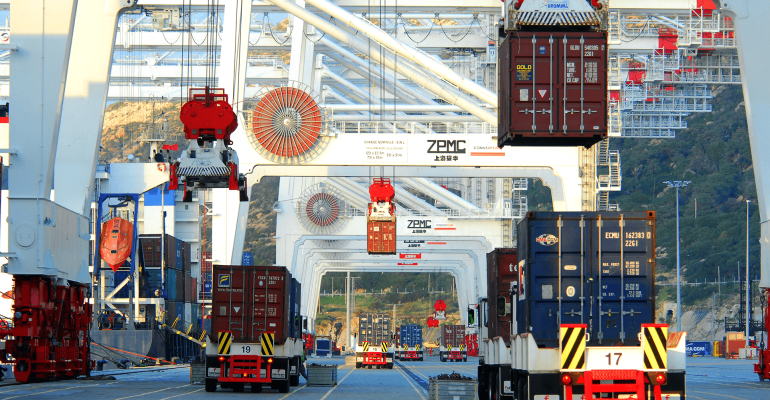Analysis from Xeneta showed that operators on the Asia – Med route are paying a premium of $1,150 on the spot market compared to the Northern Europe routes.
“There is an interesting new dynamic at work here,” said Xeneta chief analyst, Peter Sand. “If we look back to the years from 2015 to mid-2021 there was a spread of less than $100 per feu, with the Far East – Mediterranean route commanding the slight premium.
“However, the ‘second wave’ of covid introduced a new age of volatility, with the North Europe corridor racing to spot rates of $14,300 per feu in Q4 2021 – almost $1,000 more than Mediterranean-bound containers.”
The swinging spread between the routes had changed again six months later, where the Mediterranean premium reached $2,300 per feu.
“The spread then evaporated, then returned, and has seemingly steadied near the $1,000 mark. Long-term rates have also been prone to similar, dramatic fluctuations, with contracts from the Far East to North Europe currently around $1,600 per feu– $625 less than contracted prices to the Mediterranean,” said Sand.
Looking behind the rates, Northern Europe imports from Asia fell by 8% or around 280,000 teu in the first four months of 2023, while demand on the Asia - East Mediterranean route rose by 21.9% or 195,000 teu, with a lesser 2.3% demand increase on the West Mediterranean route.
“It’s been a wild rates ride and, while things seem to have stabilized, it’ll be fascinating to watch further developments as the traditional Q3 peak season approaches,” said Sand.
Med routes currently show higher spot than contract rates, while the opposite is true for Asia – Northern Europe.
“For further ‘health checks’ on the trades we can look at current blank sailing data. Here we see almost non-existent blankings into the Mediterranean, while between five and 13% of capacity is blanked from the Far East to North Europe.”
Sand’s outlook for the route was one of caution.
“Our data shows the Far East – Mediterranean route’s relative strength, but relative is the operative word here. Looking at how rates have fallen from their peaks a year and a half ago, we see a dramatic transformation in fortunes. Yes, we’re seeing strong demand into the Mediterranean this year, but all that’s achieved is a slowing down of the rates decline, rather than a turnaround,” said Sand.
Copyright © 2024. All rights reserved. Seatrade, a trading name of Informa Markets (UK) Limited.
Add Seatrade Maritime News to your Google News feed.  |

